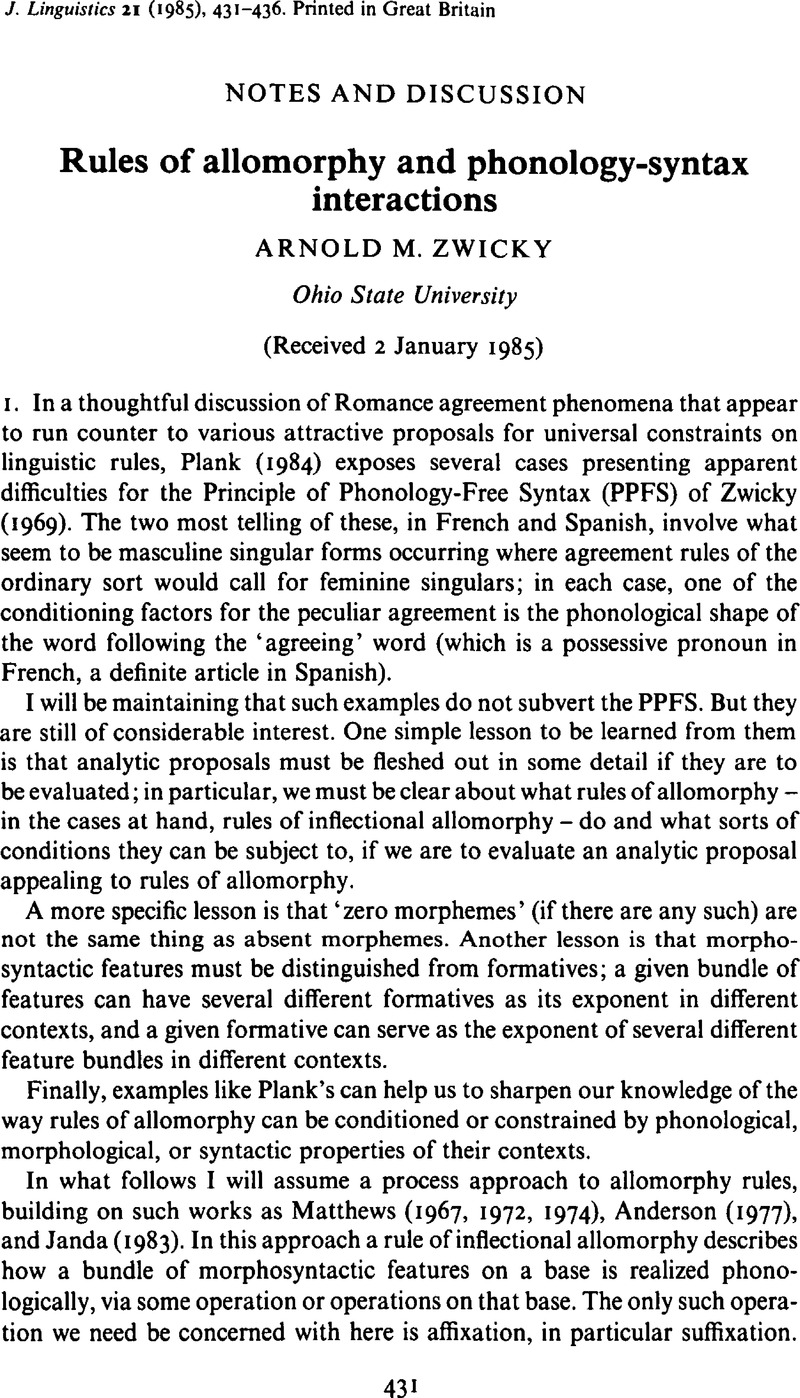Crossref Citations
This article has been cited by the following publications. This list is generated based on data provided by Crossref.
Posner, Rebecca
1985.
Non-agreement on Romance disagreements.
Journal of Linguistics,
Vol. 21,
Issue. 2,
p.
437.
Zwicky, Arnold M.
1987.
French prepositions:no peeking.
Phonology Yearbook,
Vol. 4,
Issue. 1,
p.
211.
Zwicky, Arnold M.
1987.
Suppressing the Zs.
Journal of Linguistics,
Vol. 23,
Issue. 1,
p.
133.
Harris, James W.
1987.
Disagreement rules, referral rules, and the Spanish feminine article el.
Journal of Linguistics,
Vol. 23,
Issue. 1,
p.
177.
Nuessel, Frank
1992.
New analyses in romance linguistics. Selected papers from the XVIII linguistic symposium on romance languages Urbana-Champaign, April 7–9, 1988.
Lingua,
Vol. 86,
Issue. 2-3,
p.
235.
1993.
Theoretical analyses in romance linguistics. Selected papers from the nineteenth annual symposium on romance languages (LSRL XIX). The Ohio State University, 21–23 April 1989.
Lingua,
Vol. 91,
Issue. 2-3,
p.
235.
Ishikawa, Masataka
1994.
DIETER WANNER, and DOUGLAS A. KIBBEE, eds.New analyses in Romance linguistics..
<i>WORD</i>,
Vol. 45,
Issue. 1,
p.
75.
Lapointe, Steven G.
2001.
Yearbook of Morphology 1999.
p.
263.
2003.
The Handbook of Historical Linguistics.
p.
744.
Crysmann, Berthold
2005.
Yearbook of Morphology 2004.
p.
73.
Wanner, Dieter
2006.
An analogical solution for Spanish soy, doy, voy, and estoy.
Probus,
Vol. 18,
Issue. 2,
O’Neill, Paul
2016.
The Cambridge Handbook of Morphology.
p.
237.
Rini, Joel
2016.
Are some Spanish nouns truly grammatical hermaphrodites?.
Zeitschrift für romanische Philologie,
Vol. 132,
Issue. 3,
2017.
The Encyclopedic Dictionary of Applied Linguistics: A Handbook for Language Teaching.
p.
744.
Bonet, Eulàlia
2018.
Missing inflectional features and missing exponents in DP-internal agreement asymmetries.
Glossa: a journal of general linguistics,
Vol. 3,
Issue. 1,
Ellingson Eddington, David
2022.
Processing Spanish gender in a usage‑based model with special reference to dual‑gendered nouns.
The Mental Lexicon,
Vol. 17,
Issue. 1,
p.
34.



